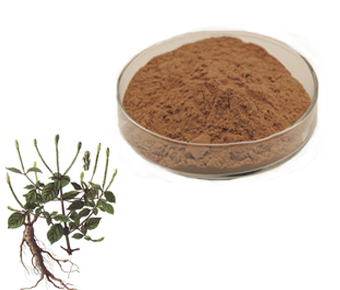Achyranthes Aspera Extract

Botanical Name : Achyranthes Aspera Extract
Common Name : Apamarga Extract
Assay : 10% -30% Saponnins by Gravimetry
Applications : GIT Protective Agent, Kidney Care Agent
Product Usage : Diuretic, Lipid reducer, Digestive
Description :
The extract of Achyranthes aspera has been widely used in Ayurveda.A plant species in the Amaranthaceae family is known as Achyranthes aspera (also known as chaff-flower, prickly chaff flower, devil's horsewhip, or Apamarga in Sanskrit). It is found all throughout the tropical world. One of the 21 leaves utilized in India's yearly Lord Ganesh Puja is apamarga. The plant Achyranthes aspera has played a significant role in Indian culture and traditional medicine. Indian tribal and rural populations have used this herb for a variety of ailments since ancient times.
Apamarga is used for a variety of medical conditions, most notably as diuretics. It is also used in obstetrics and gynecology (pregnant women should take this medication under medical care). Prickly chaff flower aids in general digestion, phlegm elimination, and toxin removal. The whole herb apamarga encourages heartbeat and blood flow. Apamarga Kshara is a specific medication made from burnt plant material that has excellent diuretic, therapeutic, and disinfecting effects. It is stated that Apamarga Kshara is helpful for urinary tract problems, such as kidney stones and burning urine. When taken consistently for 30-45 days, apamarga kshara has a general alkalising impact on the entire body. As a result, achyranthes is beneficial for gastritis, hyperacidity, and excessive Pitta.
Apamarga includes triterpenoid saponins, which support the urinary tract cleansing response, according to research studies. Achyranthes aids in removing undesirable mucus from the respiratory tract and provides relief from persistent cough and cold.
According to legend, applying a paste made of apamarga powder externally encourages the pain-relieving reaction brought on by a scorpion or crazy dog bite. Along with helping with hemorrhoids, indigestion, cough, asthma, anemia, jaundice, and snake bites, it also acts as an anti-inflammatory. Locally, apamarg oil is used to treat earaches. In skin problems, the root powder is applied to the lesion.
Application of Achyranthes Aspera Extract:
- Digestive health : Apamarga extract has long been used to support digestive health and cure gastrointestinal issues like diarrhea, indigestion, and constipation.
- Properties that reduce inflammation : Apamarga extract includes substances that reduce inflammation. It is applied to treat swelling and inflammation in many body regions, including the joints.
- Healing of wounds : Apamarga extract has been applied topically for centuries to treat wounds and encourage healing. It possesses anti-inflammatory and anti-microbial qualities that can help stop infections and lessen inflammation.
- Respiratory health: Health of the respiratory system: Apamarga extract is used to treat coughs, bronchitis, and other respiratory ailments in Ayurvedic medicine.
- Skin health: Traditional topical applications of apamarga extract have been used to treat skin disorders like eczema, psoriasis, and acne. Its antibacterial and anti-inflammatory qualities can aid in reducing inflammation and preventing infections.
- Antimicrobial properties: Apamarga extract has antibacterial qualities that can aid in the battle against a variety of bacteria, viruses, and fungus.
Achyranthes aspera extract is produced by Alpspure Lifesciences

